Book Review: The Great Auto Crash
To say that the auto industry has had a rough several years would be an understatement of epic proportions. The bailouts of GM and Chrysler dragged many of the industry’s challenges into the open, and the dramatic rescue effort brought an unprecedented level of public awareness of long-festering problems with Detroit’s business model. Here at TTAC, these troubles have provided much grist for our discussions, which tend to focus on the product, business and customer care factors. But behind the decades of Detroit’s weak products and poor business practices, lies a political-economic narrative that tends to be left out of the discussion. In End of a Dream or The Great Auto Crash: An Inside Story, economist William Vukson fits the great sweep of macroeconomic policy since Richard Nixon into a slim volume, and explains Detroit’s dramatic collapse in terms of trade and fiscal policy rather than, say, Detroit’s “Deadly Sins”.
Needless to say, this is something of a departure from standard TTAC analysis, which tends towards product-driven explanations for Detroit’s collapse. The temptation to see GM and Chrysler as the anti-Horatio Alger stories of our times, in which good companies make bad and fall from riches to rags as a pure function of the free market, is undeniable. And if The Great Auto Crash has a shortcoming, it’s that it largely ignores Detroit’s relationship with the consumer in favor of Detroit’s equally dysfunctional relationship with Washington DC and the globalizing economy. But Vukson isn’t an industry specialist (his previous work includes consulting on the Euro launch, and books on currency, and macroeconomics), and his tale of currencies, politics and international relations no more completely explains the auto crash than a purely consumer-driven explanation. As a backdrop to Detroit’s failure in the marketplace, however, The Great Auto Crash is indispensable.
It is not for nothing though, that economics is widely referred to as “the dismal science.” After a promising preface, Vukson dives into a defense of the Federal Reserve policies of recently disgraced former chairman Alan Greenspan. Without the benefit of Vukson’s economic narrative, this seems like a something of a non-sequitor, as it touches only briefly on auto industry-specific details. Keep reading though, and Vukson’s narrative unfolds in an epic sweep, starting with the Cold War policies of Richard Nixon, all the way through the Bush-Obama industry bailout.
After detailing the challenges faced by auto industry analysts attempting to read a US car market that has collapsed from nearly 17m units of annual sales to about 10.5m units, Vukson sets the way-back machine to the early 1970s, when the US auto industry’s dominance was first challenged by foreign competitors and pressure from rising inflation, OPEC and safety advocates like Ralph Nader. Nixon, argues Vukson, inherited an auto industry that faced little external pressure, and was focused largely on balancing economic gains between the union and OEM pricing power. But the first cracks were already beginning to show. The US market, long closed to competition, was opened to key cold war allies like Japan and Germany. Vukson holds that this decision, though motivated by geopolitical rather than economic concerns, would have one of the more lasting impacts on the US industry.
These foreign competitors were not expected to ever replace the Detroit firms, but were rather seen as curiosities that would soon go the way of French and Italian brands, as well as the many British sportscar makers of the post-war import boom. And though he acknowledges that Detroit’s quality was in a sorry state by the mid-1970s, he avoids drawing the conclusion that superior quality alone accounts for the rise to prominence of German and Japanese automakers.
The Ford administration’s resolution of the first OPEC energy crisis, argues Vukson, allowed Detroit to continue a “business as usual” approach that ignored the potential for a second energy crisis. When the second energy crisis hit, Detroit was left vulnerable by its own complacency, which was enabled by the “false hope” of the Ford administration. When energy prices doubled between 1978 and 1980, the imports which were only allowed market access for geopolitical reasons, suddenly found themselves holding the ball with an open path to the end zone.
Much of Auto Crash is devoted to changes that came about in the Reagan administration, particularly the inflation-busting experiments of Fed Chairman Paul Volcker. With the auto industry already struggling under pressure from OPEC and safety advocates, Volcker’s decision to halt runaway inflation with tight monetary policies sent interest rates soaring above 18 percent, and made the dollar appreciate considerably against the Japanese Yen. Vukson writes:
It was not necessarily a fact that the Japanese made more fuel efficient cars, hence the American consumer was focused on hedging the increasingly erratic prices at the pumps; but it was more a testament to the undervaluation of the Japanese imports which was made possible by tight Fed money policies to the point where these vehicles were just too good to pass up or, at least experiment with.
Vukson does acknowledge, however, that Detroit’s complacent response to the first energy crisis resulted in crude, uninspiring products that were rushed to market when the second energy crisis hit. Was this complacency the original sin? Would the Japanese automakers have made the gains in this period that they did had the Dollar-Yen relationship not spun out of balance? Vukson’s implied answer to both of these is no. In any case, he argues that the more crucial decision in the Reagan era was not Volcker’s inflation-busting per se, but the government’s response to growing pressure from Japanese automakers.
Though Reagan helped break OPEC’s power and check inflation, the final leg of his economic policy would prove to be the most disastrous yet for the Detroit firms. In the effort to secure currency concessions from Japan, the Reagan administration demanded import restrictions, and more fatally, demanded that Japanese firms produce more of their vehicles in the United States. Given the industry’s relatively rapid transition from serving a protected market dominated to the Detroit 3 to a far more globalized, competitive environment, this would prove to be the final nail in the protectionist paradigm.
With consumers already tempted by more-efficient, higher-quality Japanese cars, the rise of transplant manufacturing broke Detroit’s long-unanimous support in congress. The transplants’ decision to build plants in non-union Southern states not only helped maintain their cost-competitiveness, it divided the American body politic to the point where protectionist policies of the past had no chance of being exhumed, and enabled the loud opposition to the Bush-Obama industry bailout. The NAFTA free-trade deals of the Bush I and Clinton administrations further complicated the political perspective on Detroit, especially when Detroit became a major beneficiary of cheap Mexican labor. Low oil costs were the major government priority in terms of Detroit-friendly policies, and once again it allowed complacency that led to the short-term SUV boom.
With quality improving thanks to intense transplant competition, yet another problem was building for Detroit by the time Bill Clinton took office. Cars were lasting longer and car ownership was outstripping the population, leading to concerns about the sustainability of the industry. With Alan Greenspan in charge at the fed, financial deregulation became the industry’s great hope for a sustainable future. Taking advantage of Greenspan’s low Fed rates to offer cheap loans and cheaper leases, the industry was able to revert to a more fashion-oriented business model than the pragmatic, fear-driven approach of the 1970s. This drove huge profits in fashionable segments like SUVs and luxury cars, as the industry convinced more and more consumers to trade in their vehicles after two to four years, despite the fact that they would now last longer than ever.
But the low rates that enabled this consumer debt binge was also combining with the rise of global free trade to hollow out the American manufacturing sector while hiding its effects in subsequent technology and real-estate bubbles. This, argues Vukson, is ultimately why GM and Chrysler collapsed just a few years ago. With collapse of the credit markets, the cheap loans and leases that kept the US market “sustainable” above 15m units were no longer available, causing the entire industry to collapse to its current level. Already staggering under legacy costs, and having never fully recovered from the OPEC/currency imbalance/transplant body slams, GM and Chrysler’s immune systems were unable to survive the correction that occurred in 2008 and 2009.
Of course, Detroit had no shortage of opportunities to turn itself around, most recently with the huge profits of the SUV era. Vukson tends to trace Detroit’s inability to capitalize on the good times in preparation for the bad to government policies like Alan Greenspan’s low interest rates, which he says caused Detroit to become complacent. And if you subscribe to a more free-market philosophy, it’s tempting to dismiss this analysis as apologia. This response, however, would be missing Vukson’s main point.
Though it’s interesting to dissect the decline of Detroit, and though focusing strictly on that single phenomenon requires more than just macroeconomic analysis, there’s a larger issue at play here. The final bankruptcy and bailout of GM and Chrysler were but symptoms of a larger issue, and one that has not been resolved by the bailout: drastically reduced demand for automobiles in the US. The bailouts and reorganizations at GM and Chrysler have helped these two firms adapt to a dramatically smaller market for new cars, but it will only have been worth it if future growth is still possible. Because of inertia in consumer perceptions (not to mention anger at the bailout), GM and Chrysler’s future depends more on a pick-up in the overall market than on major gains in market share (which never happen without a fight). But, says Vukson, financial “magic” was the key to the market’s “sustainability,” and now it’s gone with no obvious replacement waiting in the wings.
Will the market return to 15m or more units any time soon? It’s hard to say that Vukson is optimistic on this point. The only real options he leaves on the table are resisting calls for financial regulation and allowing the financial “magic” to continue, or “aggressive spending” to counter the industry’s decline, specifically in the area of green technology and improved production models. Neither of these options are particularly attractive, especially for free-market-oriented thinkers, but the alternative could be an industry stuck battling for a market that refuses to grow organically. From this perspective, perhaps a more fitting title for the book would be The Great Auto Correction. In any case, Vukson’s ability to condense decades of economic and political policies into a slim, easily-understood volume is of far more value than attempts to politicize his findings. As always, the truth is a complex thing, and The Great Auto Crash adds another valuable level of analysis for more product-oriented industry-watchers.
More by Edward Niedermeyer
Latest Car Reviews
Read moreLatest Product Reviews
Read moreRecent Comments
- Kwik_Shift_Pro4X How a Versa that's a $18000 car became a $24000 car says a lot. Or even the jacked price of the current Frontiers. Not worth it.
- MaintenanceCosts They should focus on major non-Interstate routes in the flat West. I recently did a central Texas trip with a Model S rental. It was just fine along the interstates but there were significant gaps on the big federal highways, which caused a bit of extra driving to reach charging stations. The one public (non-"customers only") charger in the greater Fredericksburg area was very busy, even at non-peak times.
- Tassos Real Cars are RWD.So if you want a Lexus, try either the GS, or the flagship LS460 (before they mutilated it into the current failed model)The ES used to be a rebadged Camry, then became a rebadged Avalon at $10k more. Not a wise buy, unless you are a silly snob and would not be caught dead driving an econobox.
- Ajla Sounds like the pinstripes, nitrogen, window tint, TruCoat, and "filing fee" is about to go up. It is pretty fun to see a $18K Versa with $3k in add ons.
- Tane94 A very cogent article, Tim. Maybe Cadillac needs its own version of Lincoln's Black Label edition to upscale its interiors. I don't know what Lincoln's take rate for the Black Label is but the BL interiors are outstanding.



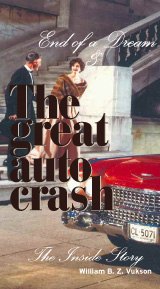












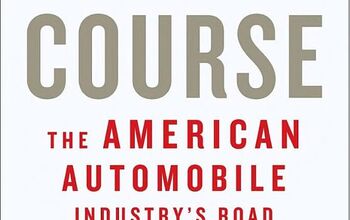
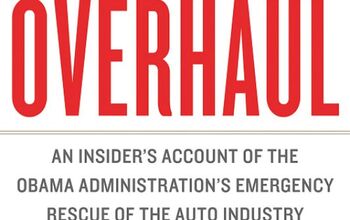

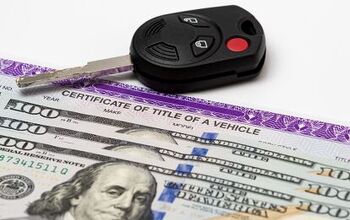


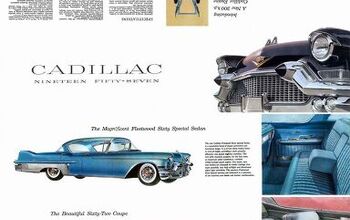



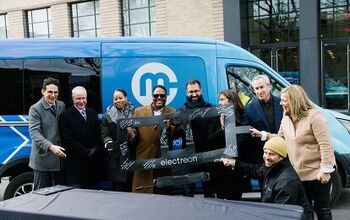




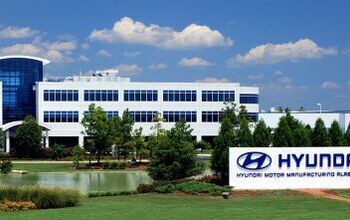


Comments
Join the conversation
So,..the book is recommended? I'll hafta pick it up. I would recommend "the Reckoning" by David Halberstam. Thats a great read about the coming of the end of the US auto industry.It seems like lots of people saw this coming for years....and it was written in 1986. I wish Mr. Halberstam was alive today to see Toyota overtake GM.
Flameded, it is beginning to look like toyota may not overtake gm after all. Many of the people that were sucked in by all of the hype are now starting to see things as they really are.